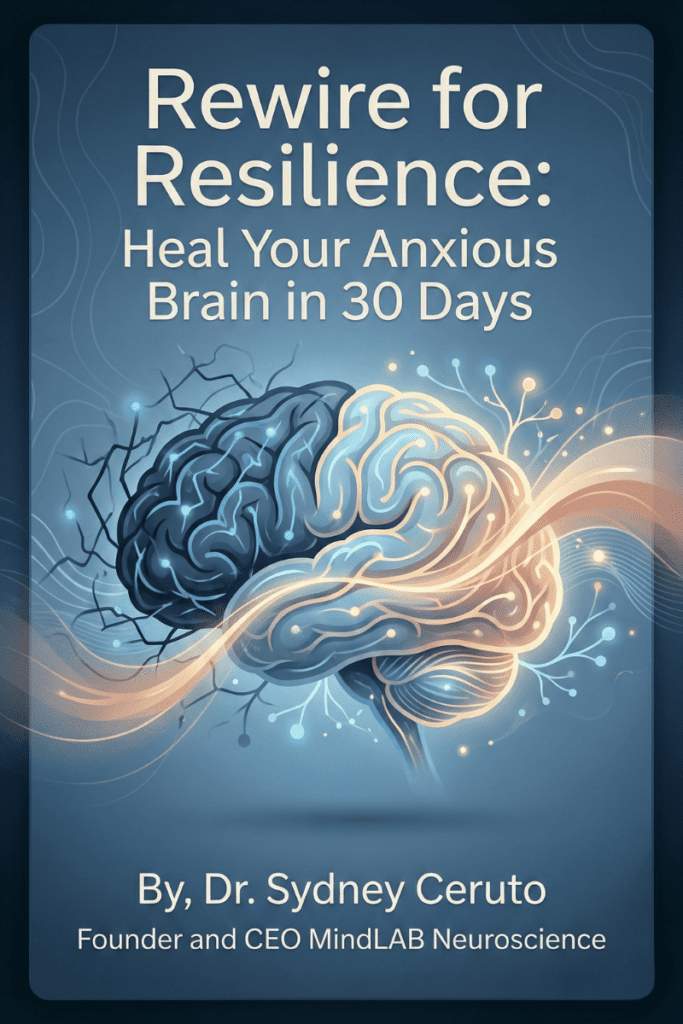On average, people have about 6,200 thoughts each day. Inevitably, some will be unwanted, alarming, or just plain strange.
You know the kind: You’re driving down the freeway and suddenly visualize yanking the steering wheel to the left and careening into a ravine. Or you’re admiring the crashing waves beneath you—and, out of the blue, imagine pushing your partner off the cliff.
Both are examples of intrusive thoughts, and while they might feel upsetting when they strike, most of the time, they’re perfectly normal. We all have these thoughts, and for the most part, we don’t really do anything with them. We just kind of say, ‘Oh, that’s a doozy. I don’t want to do that, and I’m probably not going to do it,’ and the thought ends up being like a brain fart—like mental noise.
For some people, though, these thoughts linger and become debilitating. That’s largely omitted from conversations on social-media platforms like TikTok, where the “ha-ha” versions of intrusive thoughts are trending: In one video labeled “my intrusive thoughts won,” a woman slowly tastes a piece of confetti that rained down on her during a concert. In another, a man impulsively presses the SOS button in his car, triggering an emergency call.
While the millions of video views have helped shine a light on and even normalize something that can feel shameful, experts say social media posts don’t capture the full story.
What are intrusive thoughts, really?
Mental-health experts define them as unwanted and repetitive thoughts, images, or urges. Intrusive thoughts are typically violent, sexual, or blasphemous. It can be anything that a person finds repugnant or incongruent with their values and beliefs.
That makes them different from what’s commonly portrayed on TikTok: A quick thought about whether you should jump on stage as your favorite band plays probably won’t occur again, and likely won’t cause too much distress—unless you deeply value rule-following and are worried about what the idea says about you.
Some research suggests that lack of sleep, stress, and anxiety can increase the frequency of intrusive thoughts. Often, however, they appear spontaneously: someone might be holding a baby and suddenly imagine dropping him. Or, they might be hanging out on the balcony when they abruptly think about jumping over it. The thought could also center on having sex with a family member, encountering dangerous germs, or doing something embarrassing in front of a lot of people.
Many TikTok videos about intrusive thoughts make it seem like people have no choice but to give in to them, as though they’re commands. But the idea that these thoughts are linked with behavior is a big misconception. The reality is that our intrusive thoughts alone can’t compel us to engage in a behavior that we don’t want to do. A true intrusive thought is simply a thought, and we can choose to act on it or not.
It’s important to note that thoughts cannot be controlled since they are directed by our Autonomic Nervous System (ANS). This understanding is crucial when dealing with intrusive thoughts.

The Nature of Intrusive Thoughts
Intrusive thoughts are a common experience for most people. They can range from mild to severe and can occur in various forms. Some common types of intrusive thoughts include:
- Harm-related thoughts: Imagining harming oneself or others, even if you have no intention of doing so.
- Sexual thoughts: Unwanted sexual images or ideas, often involving taboo or inappropriate scenarios.
- Religious or blasphemous thoughts: Ideas that go against one’s religious beliefs or values.
- Contamination thoughts: Excessive worry about germs, diseases, or contamination.
- Perfectionism-related thoughts: Obsessive ideas about order, symmetry, or getting things “just right.”
While these thoughts can be distressing, it’s essential to remember that having them doesn’t make you a bad person. In fact, the very fact that you find these thoughts distressing is a sign that they don’t align with your true values or desires.
The Autonomic Nervous System and Intrusive Thoughts
Understanding the role of the Autonomic Nervous System (ANS) in generating thoughts can help individuals cope with intrusive thoughts more effectively. The ANS is responsible for regulating many involuntary bodily functions, including heart rate, digestion, and respiratory rate. It also plays a crucial role in our fight-or-flight response.
When it comes to intrusive thoughts, the ANS can sometimes misinterpret neutral stimuli as threats, triggering anxiety and a cascade of unwanted thoughts. This is why thoughts cannot be directly controlled – they are often automatic responses generated by our nervous system.
However, while we can’t control the thoughts themselves, we can learn to manage our responses to them. This is where neuroscience-based approaches come into play, helping individuals develop healthier relationships with their thoughts.
The Impact of Intrusive Thoughts
The majority of people do not act on these thoughts—and these involuntary thoughts don’t capture their actual desires. Still, some people become tormented by the possibility that their intrusive thoughts are true or will cause them to act in a certain way, and might begin performing compulsions in order to rid themselves of these thoughts—or alter their lives and routines entirely.
Some people with obsessive-compulsive condition (OCD), in particular, tend to experience intrusive thoughts more intensely than others and have a harder time shaking them off. They don’t regard them as passing notions—they take them literally. Say you’re driving down the road and suddenly wonder what would happen if you steered your car into a tree. Most people would allow the thought to dissipate as quickly as it formed, but a person with OCD might assume it means they’re dangerous and shouldn’t drive.
Such concerns often afflict new parents, who might experience the intrusive thought that they could harm or inappropriately touch their baby—and then refuse to change the child’s diaper or otherwise interact with him. That could jeopardize the person’s relationship with their child, while also making things more difficult for their partner, who’s suddenly tasked with handling all baby-related duties.
They get stuck in a tug-of-war with their intrusive thoughts. And that’s a game you cannot win, because our thoughts are ubiquitous. As soon as we try to stop having them, we think about them more.

Neuroscience-Based Approaches to Support
If intrusive or impulsive thoughts are causing a great deal of distress or interfering with your ability to function, it’s time to seek help. A mental-health professional can determine if they’re benign or if something more serious is going on. It’s possible you could be dealing with OCD, a mood condition, depression, anxiety, or post-traumatic stress condition.
Research suggests that neuroscience-based coaching is an effective support option for intrusive thoughts. This approach leverages the brain’s neuroplasticity—its ability to change and adapt—to help individuals manage their thoughts more effectively. By understanding how the brain processes and responds to intrusive thoughts, individuals can learn to rewire their neural pathways, reducing the impact and frequency of these unwanted thoughts.
Some key aspects of neuroscience-based approaches include:
- Mindfulness techniques: Practicing mindfulness can help individuals observe their thoughts without judgment, reducing their emotional impact.
- Cognitive restructuring: This involves identifying and challenging negative thought patterns, replacing them with more balanced and realistic ones.
- Exposure and response prevention: This technique involves confronting thoughts and allowing them to occur without performing compulsive behaviors.
- Neuroplasticity exercises: Specific activities designed to strengthen neural pathways associated with calm and rational thinking.
- Stress reduction techniques: Since stress can exacerbate intrusive thoughts, learning stress management skills is crucial.
One common technique involves confronting these thoughts and allowing them to occur without feeling the need to perform a compulsive behavior. It’s all about learning to relate to these thoughts differently. We want to get to a place where we’re essentially saying, ‘Hey, a thought is a thought.’ A thought of ‘What if I’m a serial killer?’ is no different than a thought of ‘What if I’m a banana?’
The Role of Neuroplasticity in Support
Neuroplasticity, the brain’s ability to form new neural connections and adapt throughout life, is a key concept in supporting intrusive thoughts. When we repeatedly engage in certain thought patterns or behaviors, we strengthen the neural pathways associated with them. Conversely, when we learn new ways of thinking and behaving, we can create and strengthen new neural pathways.
In the context of intrusive thoughts, neuroscience-based approaches aim to:
- Weaken the neural pathways associated with intrusive thoughts and anxiety responses.
- Strengthen pathways associated with calm, rational thinking and adaptive behaviors.
- Enhance the brain’s ability to differentiate between real threats and false alarms.
- Improve emotional regulation and stress management capabilities.
By consistently practicing these new ways of thinking and responding, individuals can literally rewire their brains over time, making it easier to manage intrusive thoughts effectively.
Support Outcomes and Long-Term Management
A majority of clients respond well to support and learn that their disturbing thoughts are actually safe and manageable. That can happen within eight to 10 weeks—and many people report a pretty steep reduction in intrusive thoughts after about two weeks. There is no world in which we’re never going to have these thoughts. But there is a world in which these thoughts aren’t impactful.
Long-term management of intrusive thoughts often involves:
- Ongoing practice of learned techniques
- Regular self-reflection and mindfulness
- Stress management and self-care
- Seeking support when needed
- Accepting that some intrusive thoughts may still occur, but knowing how to handle them
Remember, the goal isn’t to eliminate intrusive thoughts entirely (which isn’t possible), but to change our relationship with them and reduce their impact on our lives.
The Importance of Seeking Help
Anyone struggling with intrusive thoughts should remember they’re not alone. Even though the TikTok trend doesn’t get things right all the time, it does help normalize confusing thoughts—which is significant, given that many people believe there’s something wrong with them and are reluctant to disclose their experiences to others.
If intrusive thoughts are causing significant distress or interfering with daily life, it’s crucial to seek professional help. A mental health professional trained in neuroscience, can provide a proper assessment and develop a tailored support plan. They can also help differentiate between normal intrusive thoughts and those that might be symptoms of conditions like OCD, anxiety conditions, or depression.
Closing Remarks
Keep in mind that most of the people you’re surrounded by have intrusive thoughts from time to time. These are just thoughts—they’re not indicators of who you are as a person, what your values are, or what your beliefs are. With the right approach and support, it’s possible to learn to manage intrusive thoughts effectively and reduce their impact on your life. Remember, having these thoughts doesn’t define you—it’s a common human experience, and help is available if you need it.





